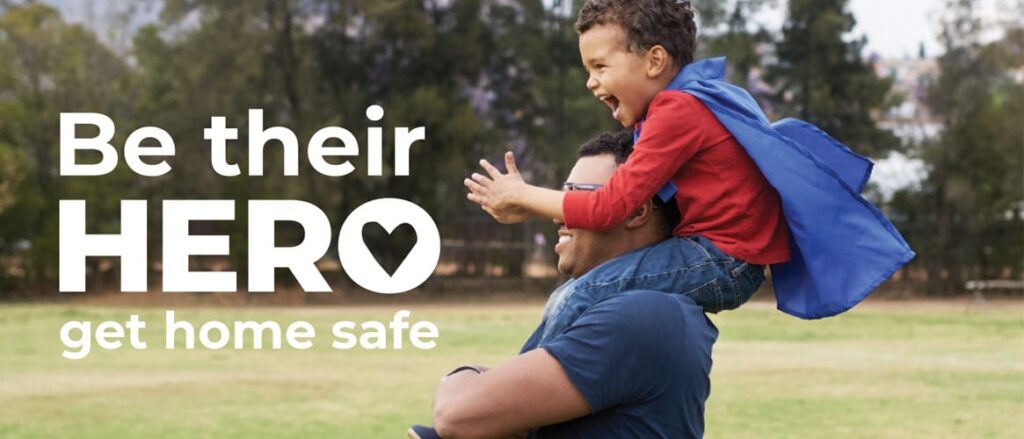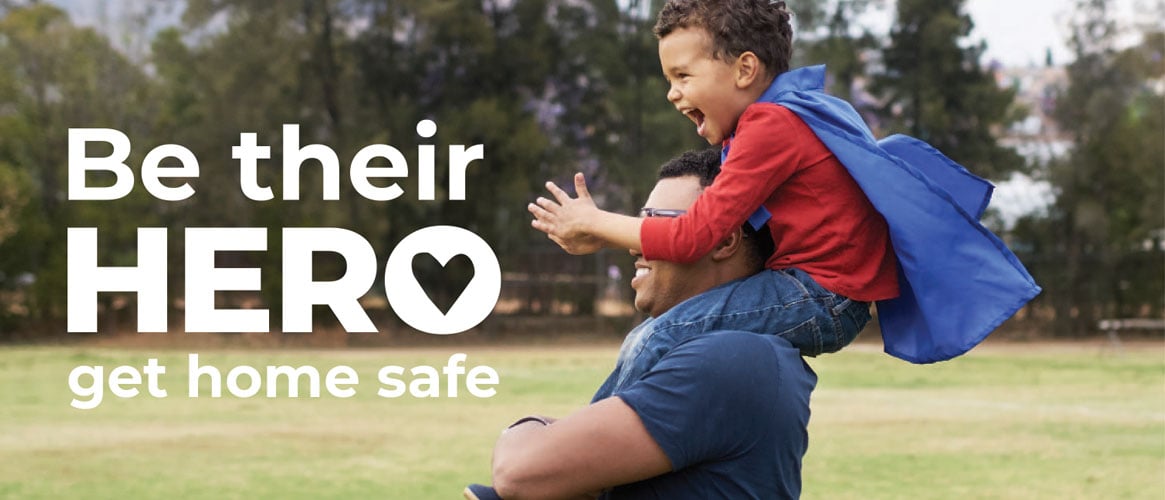
The Rise of the ‘Safety Dad’: Redefining Fatherhood in the Modern Age
In an era defined by heightened awareness of risks and a constant stream of information, a new archetype of fatherhood has emerged: the ‘Safety Dad.’ More than just providers and disciplinarians, these fathers prioritize the safety and well-being of their children above all else, navigating a complex landscape of potential hazards with diligence and proactive measures. This article explores the multifaceted role of the ‘Safety Dad,’ examining the factors driving this trend, the strategies they employ, and the impact on their families and communities. Understanding the ‘Safety Dad’ phenomenon provides valuable insights into contemporary parenting and the evolving responsibilities of fathers in the 21st century.
Understanding the ‘Safety Dad’
The term ‘Safety Dad’ describes a father who actively and consciously prioritizes the safety and security of his children. This isn’t merely about ensuring they wear helmets while biking or buckling up in the car. It’s a holistic approach encompassing physical, emotional, digital, and social well-being. The ‘Safety Dad’ is informed, proactive, and constantly evaluating potential risks to mitigate them effectively. The ‘Safety Dad’ understands that safety is not merely the absence of danger but also the presence of safeguards and resilience.
Several factors have contributed to the rise of the ‘Safety Dad.’ Increased media coverage of child-related dangers, from playground accidents to online predators, has heightened parental anxiety. The proliferation of information online, while offering valuable resources, can also fuel fears and create a sense of constant vigilance. Furthermore, societal shifts towards more involved fatherhood have empowered men to take a more active role in all aspects of their children’s lives, including safety. The modern ‘Safety Dad’ isn’t just reacting to threats; they are actively shaping a safer environment for their families.
Key Areas of Focus for the Safety-Conscious Father
Physical Safety: A Foundation of Well-being
Ensuring physical safety remains a cornerstone of the ‘Safety Dad’ ethos. This involves creating a safe home environment, free from hazards like unsecured medications or sharp objects. It also extends to outdoor activities, with careful planning, appropriate gear, and constant supervision. ‘Safety Dads’ are often well-versed in first aid and CPR, prepared to handle emergencies effectively. They meticulously research product safety ratings, from car seats to cribs, ensuring they are providing the safest possible equipment for their children. The ‘Safety Dad’ also emphasizes teaching children about safety protocols, empowering them to make informed decisions and protect themselves in various situations. This proactive approach to physical safety instills confidence and reduces the likelihood of accidents and injuries.
Digital Safety: Navigating the Online World
In today’s digital age, online safety is paramount. ‘Safety Dads’ recognize the potential risks associated with internet use, including cyberbullying, exposure to inappropriate content, and online predators. They take proactive steps to protect their children, such as implementing parental controls, monitoring online activity, and educating them about responsible online behavior. They teach their children about the importance of privacy, the dangers of sharing personal information online, and how to identify and report suspicious activity. ‘Safety Dads’ also stay informed about the latest online threats and technologies, adapting their strategies to keep pace with the ever-evolving digital landscape. Open communication is key; they encourage their children to come to them with any concerns or issues they encounter online. This fosters a trusting relationship and ensures that children feel safe reporting potential problems.
Emotional Safety: Fostering Resilience and Well-being
Emotional safety is just as crucial as physical and digital safety. ‘Safety Dads’ strive to create a supportive and nurturing environment where their children feel safe expressing their emotions, sharing their concerns, and taking risks without fear of judgment. They actively listen to their children, validate their feelings, and offer guidance and support. They also teach their children about emotional regulation, helping them develop healthy coping mechanisms for dealing with stress, anxiety, and other challenging emotions. ‘Safety Dads’ understand the importance of building resilience in their children, empowering them to bounce back from setbacks and overcome adversity. They model healthy emotional behaviors themselves, demonstrating empathy, compassion, and effective communication skills. This creates a foundation of trust and security, allowing children to thrive emotionally and develop strong, healthy relationships.
Social Safety: Building Healthy Relationships
‘Safety Dads’ also play a critical role in promoting social safety. They help their children navigate the complexities of social relationships, teaching them about respect, empathy, and healthy boundaries. They encourage their children to develop strong social skills, such as communication, cooperation, and conflict resolution. ‘Safety Dads’ also monitor their children’s social interactions, both online and offline, to identify and address any potential issues, such as bullying or unhealthy peer pressure. They work with schools and other community organizations to create a safe and supportive social environment for their children. They also teach their children about the importance of seeking help from trusted adults if they experience any form of social harm. By fostering healthy social connections and promoting positive social values, ‘Safety Dads’ help their children develop into responsible and compassionate members of society. [See also: The Importance of Father-Child Communication]
Strategies Employed by the ‘Safety Dad’
- Proactive Risk Assessment: Identifying potential hazards and implementing preventative measures.
- Open Communication: Creating a safe space for children to share their concerns and experiences.
- Education and Empowerment: Teaching children about safety protocols and empowering them to make informed decisions.
- Technology Monitoring: Utilizing parental controls and monitoring online activity to ensure digital safety.
- Community Involvement: Engaging with schools and other organizations to create a safe and supportive environment.
- Continuous Learning: Staying informed about the latest safety threats and best practices.
- Modeling Safe Behavior: Demonstrating safe practices and responsible decision-making.
The Impact of the ‘Safety Dad’
The rise of the ‘Safety Dad’ has profound implications for families and communities. Children raised by safety-conscious fathers are more likely to be physically, emotionally, and socially resilient. They develop a strong sense of security and confidence, allowing them to explore the world with greater freedom and independence. Families benefit from reduced stress and anxiety, knowing that their children are well-protected and prepared for potential challenges. Communities are strengthened by the presence of involved and responsible fathers who prioritize the well-being of their children. The ‘Safety Dad’ is not just a protector; he is a role model, a mentor, and a champion for a safer and more nurturing world.
Criticisms and Considerations
While the ‘Safety Dad’ archetype is largely positive, it’s important to acknowledge potential criticisms and considerations. Some argue that an overemphasis on safety can lead to helicopter parenting, stifling children’s independence and hindering their ability to take risks and learn from their mistakes. It’s crucial for ‘Safety Dads’ to strike a balance between protection and autonomy, allowing their children to experience age-appropriate challenges and develop their own problem-solving skills. Additionally, the pursuit of safety should not come at the expense of other important values, such as creativity, exploration, and social interaction. The ‘Safety Dad’ must be mindful of these potential pitfalls and strive to create a balanced and nurturing environment for their children. [See also: Balancing Safety and Independence in Parenting]
The Future of Fatherhood: Embracing the ‘Safety Dad’ Role
The ‘Safety Dad’ is not a fleeting trend but a reflection of the evolving responsibilities of fatherhood in the modern age. As the world becomes increasingly complex and interconnected, the need for safety-conscious parents will only grow stronger. By embracing the ‘Safety Dad’ role, fathers can play a vital role in protecting their children, fostering their well-being, and shaping a safer and more secure future for all. The modern father understands the importance of being a ‘Safety Dad.’ It’s about being present, informed, and proactive in safeguarding the well-being of their children, both now and in the future. The ‘Safety Dad’ is a vital part of the family unit and a testament to the evolving role of fathers in contemporary society. The ‘Safety Dad’ is here to stay, shaping the future of fatherhood and ensuring the safety and well-being of generations to come. The proactive ‘Safety Dad’ is a force for good.
In conclusion, the ‘Safety Dad’ represents a significant shift in contemporary fatherhood. By prioritizing safety across all aspects of their children’s lives, these fathers are creating a more secure and nurturing environment for their families and communities. While it’s important to avoid overprotective tendencies, the ‘Safety Dad’ embodies a commitment to responsible and involved parenting that is essential in today’s world. The ‘Safety Dad’ is more than just a protector; he is a proactive advocate for the well-being of his children, shaping a brighter and safer future for them.

